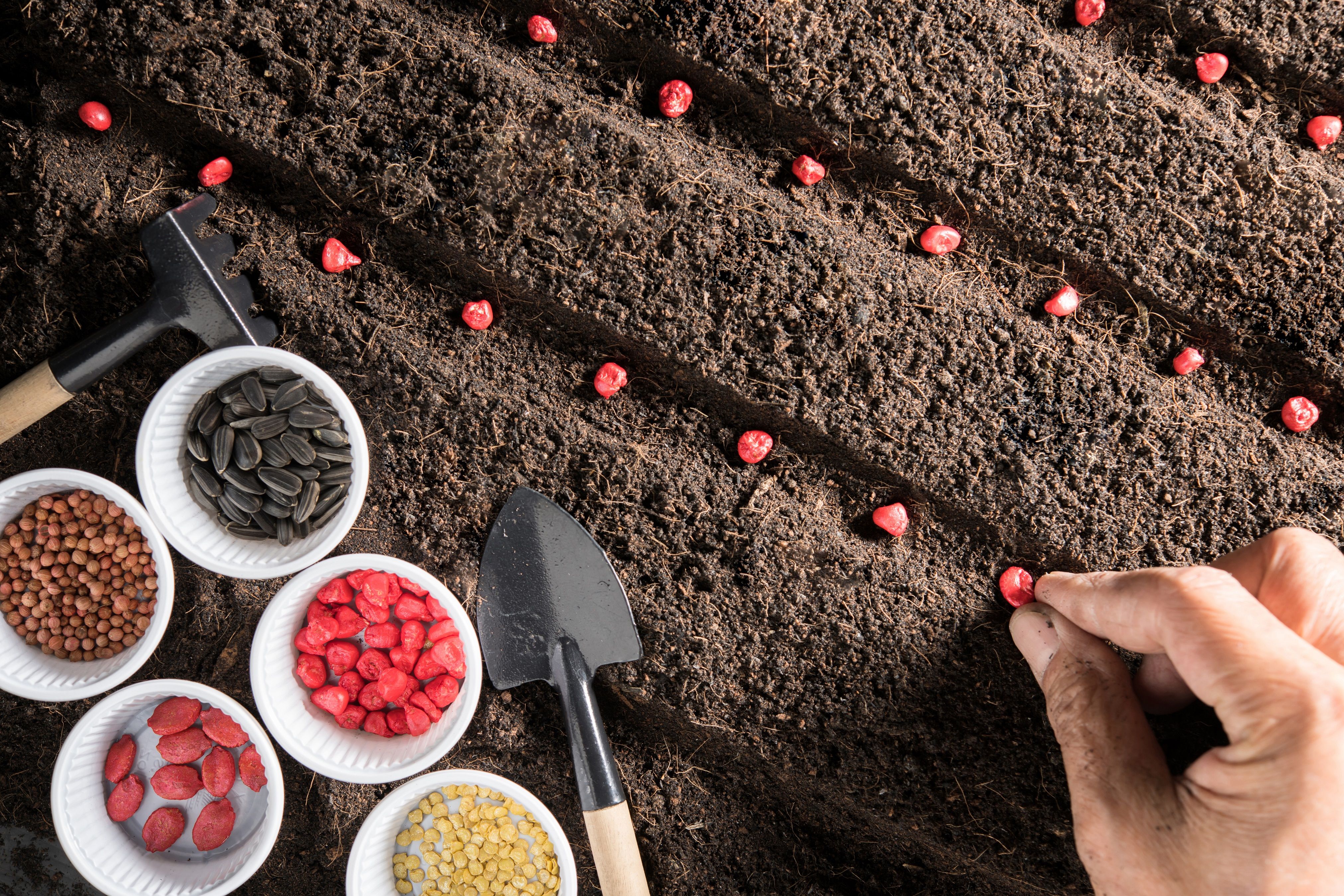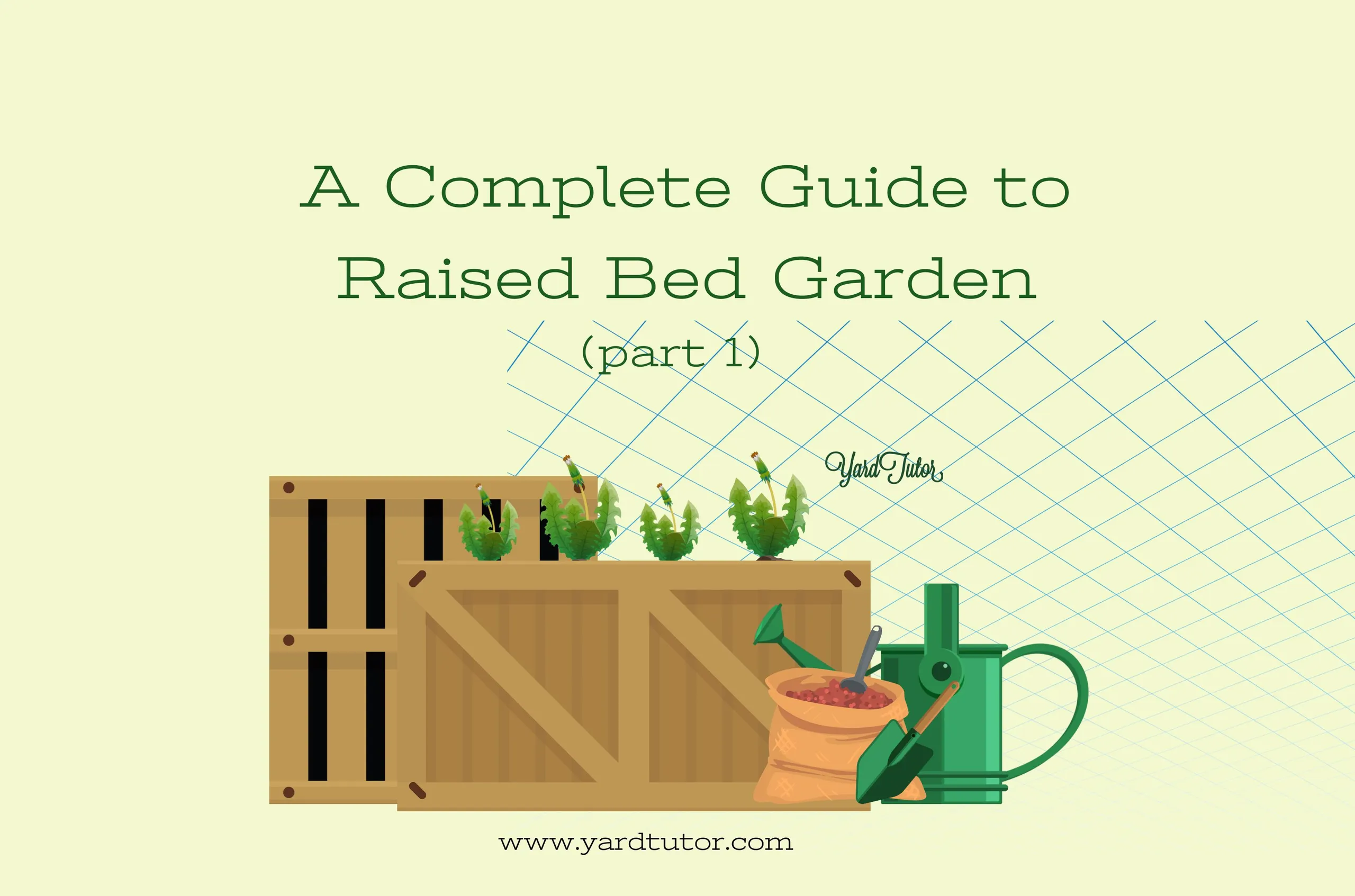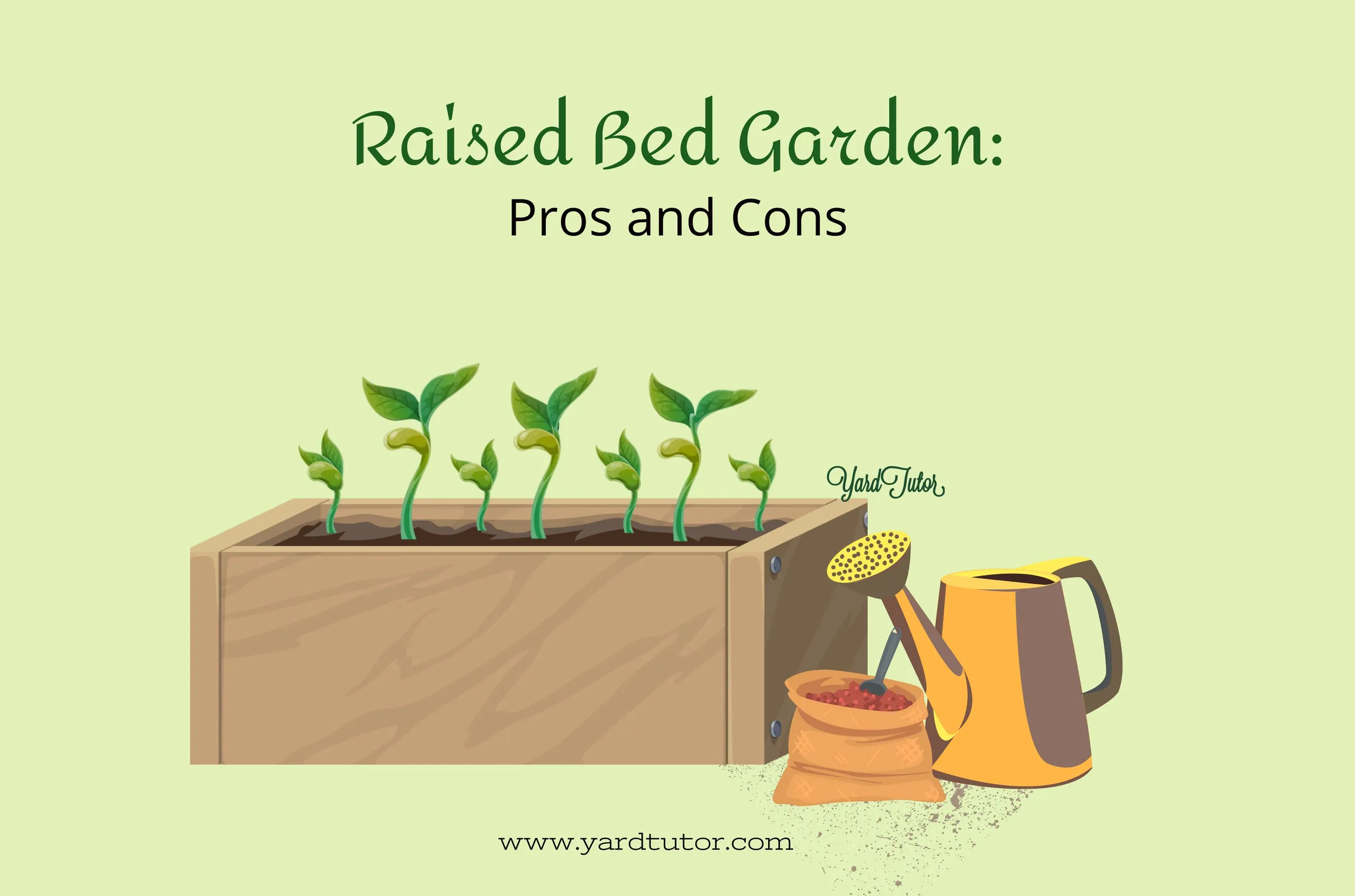How to Design Layout for Your Raised Bed Garden Easily

Raised bed gardening is fantastic. It is one of the most effective gardening styles to cultivate anything you desire, whether vegetables, herbs, or flowers. You can also meticulously regulate every aspect of a raised garden. This form of gardening is not only very advantageous but also relatively easy. But no matter how easy it is, plants in these kinds of gardens don't grow well without adequate design.
Additionally, you can modify these elevated garden beds to meet your specific requirements. Therefore, planning your garden layout in advance can help you avoid wasting a lot of time, effort, and resources later. This article will go in-depth on how you can quickly and easily design a layout for your raised bed garden in a few simple steps.
Factors to Consider When Planning for a Raised Bed Garden
There are a few key things to take into consideration before planning an attractive raised bed garden, following is a list of them.
Which Plants Do You Want to Grow and How Much Space Do They Require?
You must decide what you will plant in the elevated garden beds before proceeding with anything else. The width, length, and height of the beds will be determined by this factor alone since plants require space, both vertically and horizontally, to develop a healthy root system. Therefore, do the most thorough study you can on the plants you want to grow.
Giving crops the proper proportion of space for root development is the key to achieving big, bountiful harvests. For instance, if you want to grow deep-rooted plants like okra, tomatoes, or asparagus, whose roots can extend up to a depth of 24 to 36 inches or more, you must build your beds accordingly. The soil's depth has to accommodate the roots of the plants. However, you can build shallower beds if you want to grow plants with shallow roots, such as cabbage, cauliflower, or potatoes, whose roots extend up to 12 to 18 inches into the soil.
Raised bed gardening is all about optimizing the area for a plentiful yield and modifying the aspects of the beds according to the needs of plants. The type of soil, fertilizers, protection, etc. must be chosen based on the plants you wish to grow. So, make a list of the plants you intend to grow because it will be useful later.
Do You Want to Grow Any Vining Crops?

Another thing to consider is whether you will grow vining plants, such as beans or peas, in your raised garden beds. The advantage of raised gardens is that you can plant whatever you want. However, remember that vining plants require additional support structures.
Yes, it is possible to grow vining plants without support, but doing so typically leads to crops that are less resistant to pests and diseases produce less fruit or vegetables.
So, if you want to grow vining crops in raised beds, consider purchasing or making some kind of supporting structures to ensure healthy plant development. There are many supporting structures available for vining plants, including stakes, trellises, cages, arbors, etc.
How Much Sunlight Do the Plants Need?

The amount of sunlight your garden receives is another important factor to consider. While sunlight is necessary for all plants to flourish, the quantity and intensity of light that each plant needs to thrive vary.
Most vegetable plants need at least 8 hours of sunlight each day to thrive, with 6 hours being the absolute minimum. However, plants such as Lenten Rose, Inkberry Holly, and Yew flourish well with less than 3 hours of direct sunlight each day.
One benefit of a DIY raised bed garden is that it can be erected anywhere, as long as it receives enough sunlight, that is. You should design your garden layout to ensure that the raised beds are placed where they will receive enough amount of sunlight to fulfill the requirements of your plants.
How to Mix and Match the Plants?

Many folks undertake raised bed gardening simply because they can plant more extensively in these raised garden beds. However, if you wish to grow different plants in the same raised garden bed, you must tread carefully because not all plants can be grown next to one another.
The practice of growing two or more plant varieties close together or in the same bed is known as companion planting. This increases the flavor of the vegetables, helps with pest control, enhances the soil, and gives your raised garden an elegant look.
You must conduct thorough research on which plants complement each other before adding them to the same raised beds. Once you've done that, you may arrange the plants as you wish, whether it's based on their size, the color of their flowers or leaves, or just how they are. However, it is preferable to place tall plants in the center of raised beds and small plants close to the edges.
Do You Want to Grow Plants Indoors or Outdoors?

Another aspect to consider is whether you want to raise the plants indoors or outdoors. The varieties of plants you can cultivate outside are severely constrained by the environment since plants need to develop in habitats that are appropriate for them. While indoor plants allow for easier lighting management, outside gardens depend on the sun's natural cycle. Unfortunately, not all plants can be grown indoors.
If you want to plant inside, you should consider elevated raised beds, also known as raised bed planters, which usually have closed bottoms.
What About Succession Planting?

In agribusiness, succession planting refers to several planting techniques that, by effectively utilizing time and space, maximize crop yield throughout a growing season. With succession planting, you can definitely get more out of your raised beds. You can plant another crop in the same bed after the first one is harvested. But, timing and weather are the most important factors here, so pay attention to them. After harvesting your spring produce, you can cultivate a summer crop that enjoys the heat. You can experiment with different raised bed garden ideas to prepare your succession planting method.
How Are You Going to Manage Irrigation?

You also need to think about irrigation. Contrary to what you may have heard, raised beds require more water than in-ground beds since the soil in them dries out more quickly. Your plants won't be able to flourish if you don't water your plants regularly. Additionally, regular watering makes sure that nutrients are distributed more uniformly to the roots of your plants.
If you lack the time to consistently water your lawn, you must install an automated irrigation system. The plants in your raised garden bed can, obviously, also be watered using a hose or sprinklers. However, if your raised beds have closed bottoms, you should have some sort of drainage system installed as well.
What Is Your Budget?

Last but not least, before starting raised bed gardening, you must take your budget into account. The initial cost of building a DIY raised bed garden is quite hefty. You can certainly follow some resourceful raised bed garden ideas to build one that is simpler or less expensive, but you'll still have to spend money on it.
The costliest factors are the bed's size and the materials used to build them. Given that additional material would be required for a larger bed frame. Additionally, some materials, such as untreated wood, are less expensive than cinder blocks or metal.
However, untreated wood isn't cost-effective because it rots quickly. And, if you plan to construct your raised beds using metal or cement, professional assistance and tools might well be needed. Also, you will incur additional expenses if you need to purchase bagged soil, seeds, fertilizer, supporting structures, pesticides, and other items.
You must create a budget plan and stick to it when making purchases. Don't spend all of your money on bed frames because you will also need other items. If you have a limited budget, you should build a DIY raised bed garden instead of buying prefabricated garden kits.
How to Design the Layout?
Now that you are aware of the factors to keep in mind before beginning raised bed gardening, we can dive into how you can plan a flawless garden layout. Below are some simple garden layout ideas that are broken down into 8 easy steps to help you create your own design.
Step 1: Use Pen and Paper

Start by sketching out the layout. Don't worry, you don't have to be Van Gough to design a layout. You won't even need any sophisticated software for this. You can use a cheap graph paper notebook or any notebook as a planner for your garden. You can also use this as a planting logbook from season to season.
Step 2: Layout the Beds, Account For Their Proper Size

Now plan out your garden's layout and place the beds where you want them. Make a decision regarding the size of the beds and write the actual size next to the drawn beds. Though the beds can be of any dimension, it is recommended that they not be wider than 4 feet. You should also include the height and length of the beds in the book.
Step 3: Place High-Value Crops First

Now, fill the beds with the plants you selected before. But begin laying out your garden with the crops you value most. This may be determined by the crop's availability in your local market or your needs. For instance, you may wish to plant eggplants if they are hard to find in your neighborhood market or are too expensive. Again, if you enjoy tomatoes, you might wish to cultivate them yourself because they will be much fresher than tomatoes from a store.
Therefore, begin by sowing the plants you believe are most important to you and then modify the aspects of the garden as necessary.
Step 4: Be Careful About the Spacing

You must also consider the distance between the plants; putting them too close together will impede their growth. Additionally, if you intend to plant vining plants, make sure you give them adequate space so they may climb and develop appropriately.
Step 5: Place Other Plants

Fill the beds with more plants after placing the primary ones. If there is more room available in the same bed, you can put in a few flowers and herbs also, but avoid cramming them.
Step 6: Consider Irrigation System
Don't forget to include the watering system. You can choose whatever type of irrigation system you like, but drip irrigation is much easier to install if the beds are arranged in an orderly manner, preferably in a linear fashion.
Step 7: Don’t Stop at the First Design!

Instead of merely making one design and quitting, make several more while considering the surrounding area. Making numerous designs might help you tackle any issue you encounter later because you cannot be certain of the environment and the weather.
Step 8: Choose the Best One

Among all the layout designs, pick the one that appeals to you, compliments your surroundings, and maximizes yield.
Tips for a Perfect Design
Here are a few suggestions for newcomers designing the perfect layout:
- Gather information about your garden space beforehand
- Keep a pathway between the beds and give the plants ample space to grow.
- Before anything else, make a financial model.
- For greater biodiversity, mix up the plants in the same bed.
- Be aware of the weather and microclimate of your area.
- Include supporting structures, such as trellises, in the layout.
Conclusion
It requires a significant amount of effort to design a perfect layout for your garden. Even though there are a variety of factors to consider while developing a garden plan and layout, they all appear uncomplicated once they are put on paper.
Hopefully, the information in this article will help you in designing the ideal layout for your raised bed garden. Happy gardening!









